Ever since my carrot top salsa recipe was posted, suggesting that you can eat carrot tops, I’ve received tons of emails asking if (or even insisting that) carrot tops are poisonous.
So I’ll just get right to the point: No, they are not poisonous, and yes, carrot tops are edible.
Unfortunately, the popular myth of carrot tops being toxic has been perpetuated through continual hearsay and personal anecdotes. I have yet to find any scientific study that says, once and for all, carrot tops will kill us.
(After all, I’m still here despite making bottomless jars of carrot top salsa and using carrot tops in my salads and soups… as are my loved ones.)
Related: Propaganda Told Us Carrots Can Improve Eyesight—Here’s the Truth
Much of this ballyhoo originated from a 2009 New York Times blog post where the author (who even admitted to eating his own carrot tops but lived to tell about it) presented no actual evidence that they might be toxic, and whose sole source did not even claim that carrot tops were toxic.
To quote directly from the post, “The young greens I’d ingested may have been harmless […] But a few of the carrot’s close relatives are not to be trusted.”
(Emphases are mine.)
So there you have it. That post was not about the toxicity of carrot tops at all, despite having a sensationalist title of “The Toxic Salad.”
But the rumors persist, so I thought I’d bust the most common myths I’ve seen online in the hopes that people will share the knowledge and not be afraid of these delicious and underused greens!
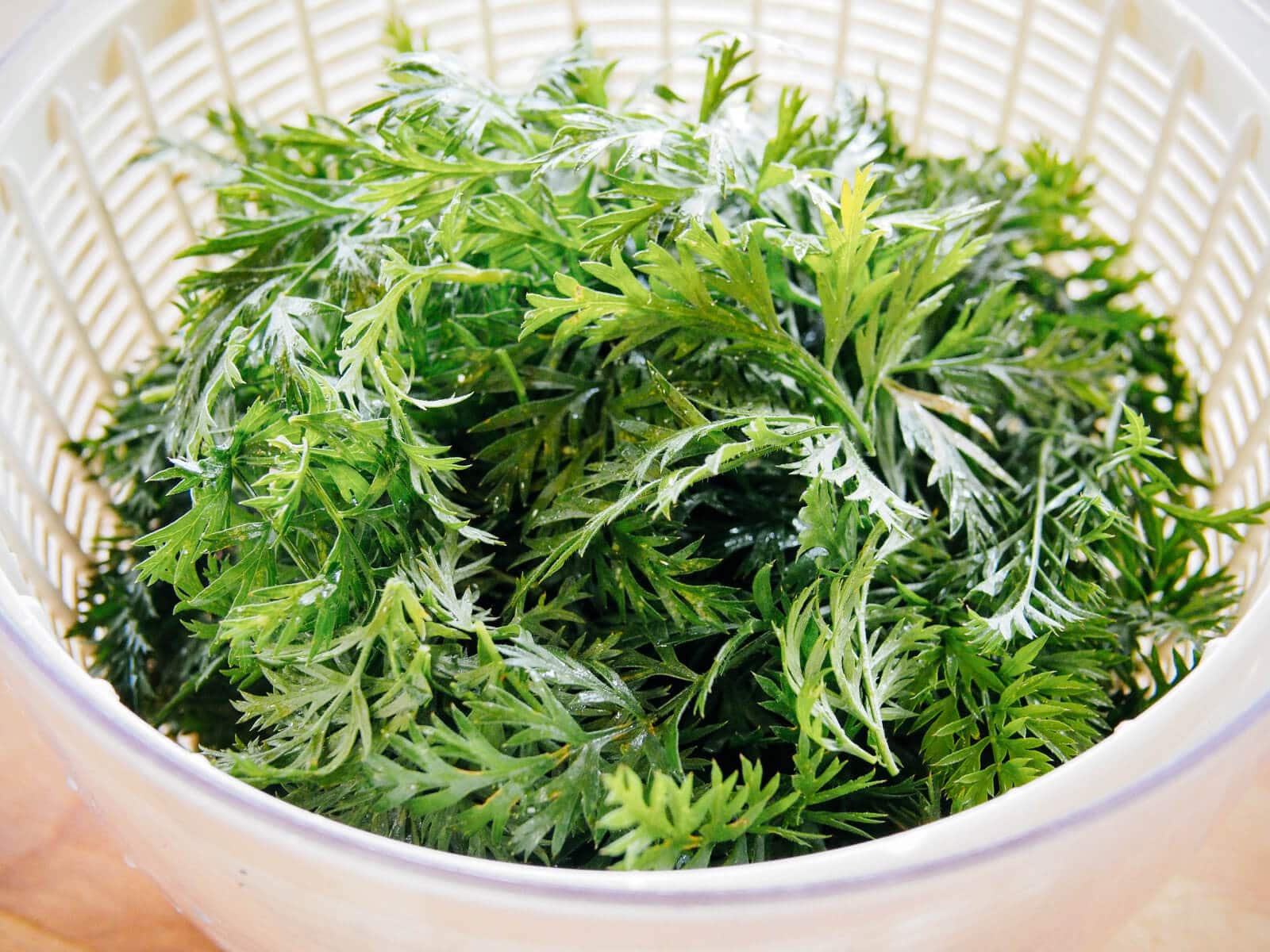
Learn more about what you can eat from the plants you grow or buy.
My book, The No-Waste Vegetable Cookbook, is a great place to start to find out how you can go zero waste (or close to it) in the kitchen, simply by knowing what you can or cannot eat from common vegetables like carrots, squash, and beans.
(Would you be surprised if I told you bean leaves are also edible? They are—plus many more plants in your garden. In fact, knowing how to use the entire plant is one of my favorite lazy gardening strategies for getting more out of a garden with less work.)
Stop tossing out perfectly good food and start using it in your recipes!
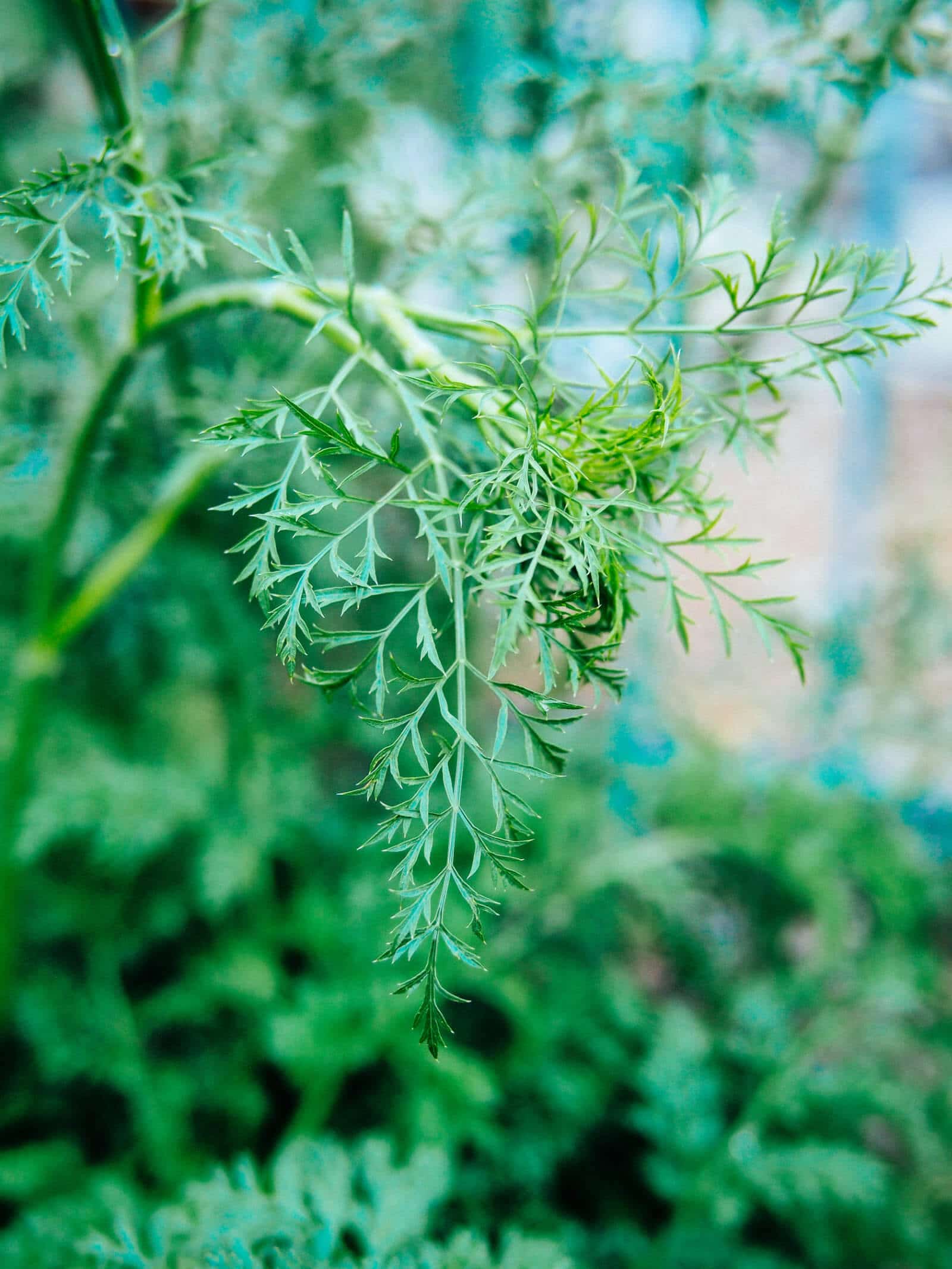
Myth #1: Carrot greens contain alkaloids (which are toxic bitter compounds produced by a plant) and all alkaloids are bad because substances like caffeine and cocaine are alkaloids.
Surprise—all leafy greens (including “good for you” greens like spinach and kale) contain varying levels and types of alkaloids, some higher than others.
Alkaloids are chemical compounds believed to be part of a plant’s defense mechanisms.
Our beloved brassicas and nightshades all contain tropane alkaloids (a class of plants that includes cocaine) and you might be surprised to learn that nicotine is naturally present in cauliflower, tomatoes, potatoes and eggplants.
In fact, eggplants have some of the highest levels of nicotine in the nightshade family—but you needn’t panic, as you’d have to eat over 20 pounds of eggplants in one sitting to ingest the same amount of nicotine found in a cigarette.
If you’ve ever wondered why chocolate always makes you feel so good, that’s because it contains another alkaloid, theobromine, which works as a mild stimulant.
All said, alkaloids are found in many of our foods but not in amounts that are actually effective, and not all alkaloids are even toxic. But if consumed in gross quantities, anything—even water—can become “toxic.”
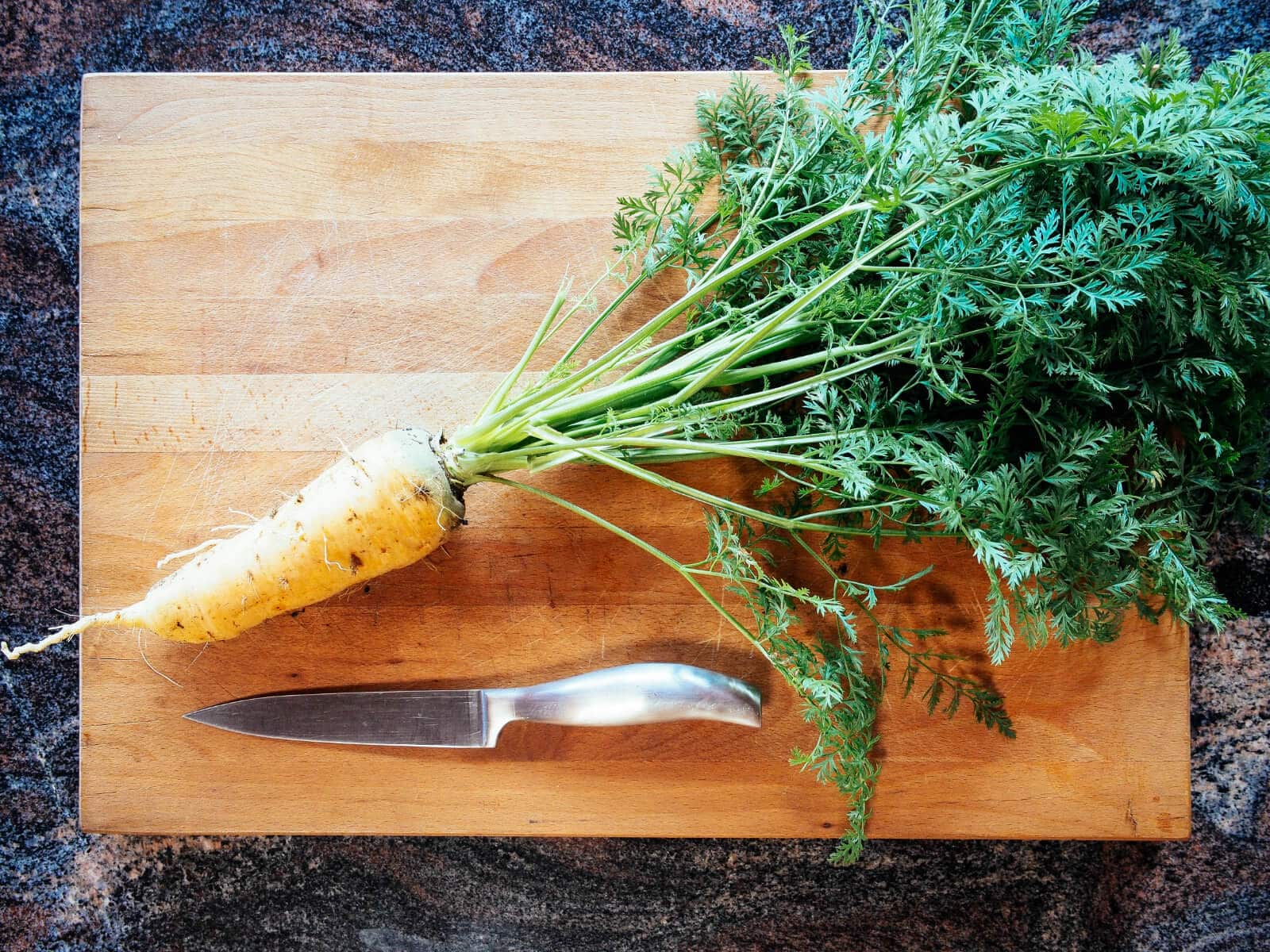
The key is consuming in moderation. Different bodies handle foods in different ways.
You can juice carrot tops and reap the benefits of all their nutrients. But, it’s probably not a good idea to juice an entire head of those carrot greens in your smoothie (and your tastebuds wouldn’t want you to), just as it’s not a good idea to eat spinach salads every day.
In fact, people who go on green juice diets are often advised to rotate their greens frequently in the rare event their bodies start accumulating the same alkaloids (which could lead to adverse reactions).
This is not to say you should stay away from greens at all; just eat a good variety of them so you get lots of different alkaloids in different quantities.
(In case you’re curious, the alkaloids found in carrot tops are pyrrolidine and daucine.)
As for the misconception that bitterness means it’s bad for you—quite the contrary. Carrot tops are indeed bitter, but that is not an indicator of them being good or bad health-wise.
Bitterness is a subjective taste that’s passed down in your genes. (And if bitterness equated to bad, I’d surely miss my collard greens, brussels sprouts, radicchio, and arugula!)
Let’s give this first myth a bust. Moving on…
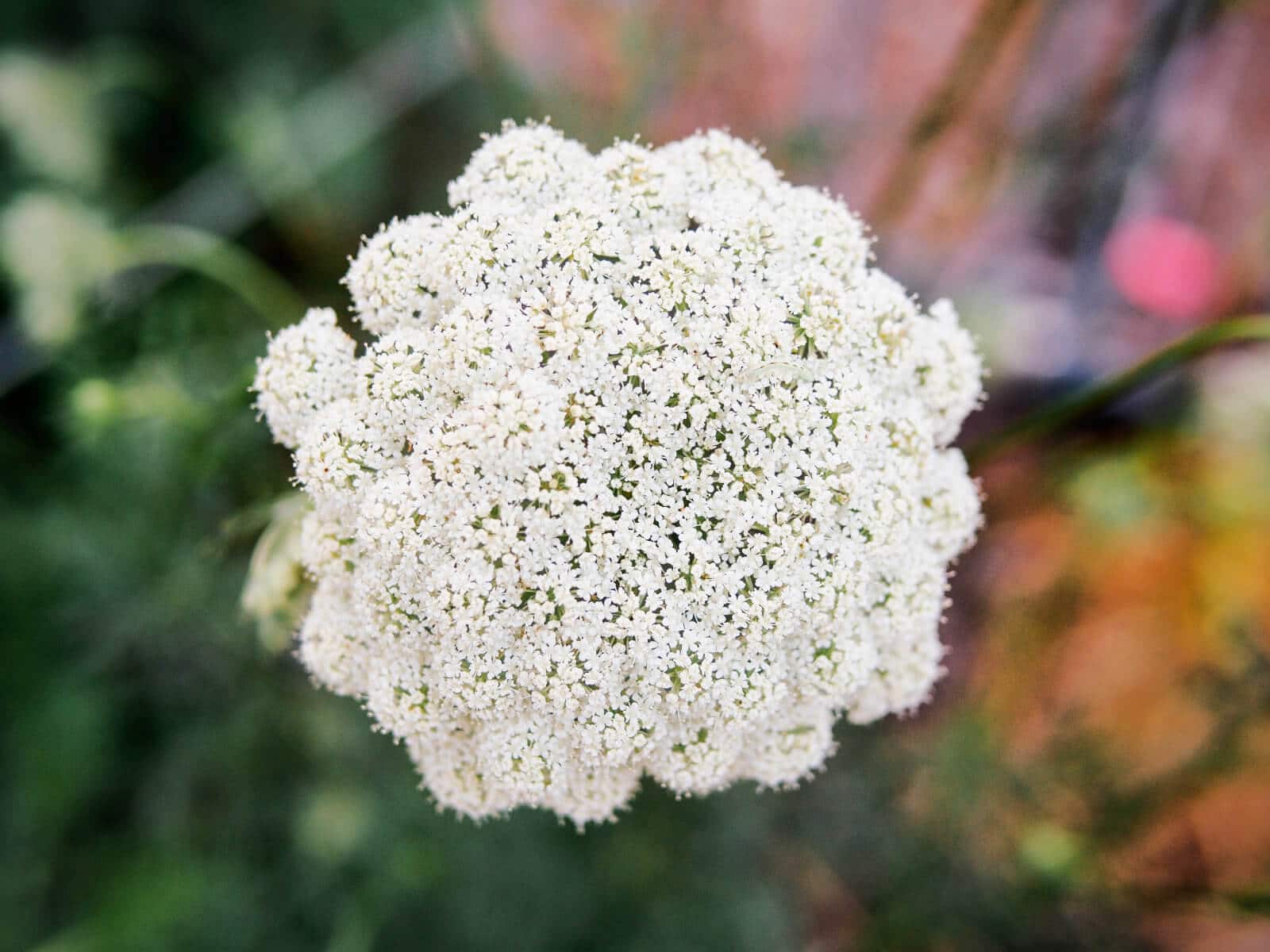
Myth #2: Carrots are related to Queen Anne’s lace and hemlock, which are poisonous.
It’s true that the modern carrot (Daucus carota subsp. sativus) was cultivated from Queen Anne’s lace (Daucus carota), an ancestor of the vegetable.
The lineage is most apparent when both plants are in bloom. Carrots and Queen Anne’s lace have delicate, umbel-shaped flower heads that look like umbrellas.
This characteristic is shared by other members of the Apiaceae family, which includes carrots, Queen Anne’s lace, parsley, dill, and fennel (all of which are bee-friendly flowers, by the way).
The taproot of today’s Queen Anne’s lace is actually edible, but it won’t taste anything like the carrot root you’re used to, which has been bred over centuries to be fleshier and sweeter.
Queen Anne’s lace is not poisonous, and you can eat the roots, leaves, flowers, and seeds (though they’re not likely to be tasty).
The problem here is that the foliage and flowers of carrots and Queen Anne’s lace closely resemble poison hemlock (Conium maculatum), which grows wild as a weed and contains toxins that can cause respiratory failure if eaten.
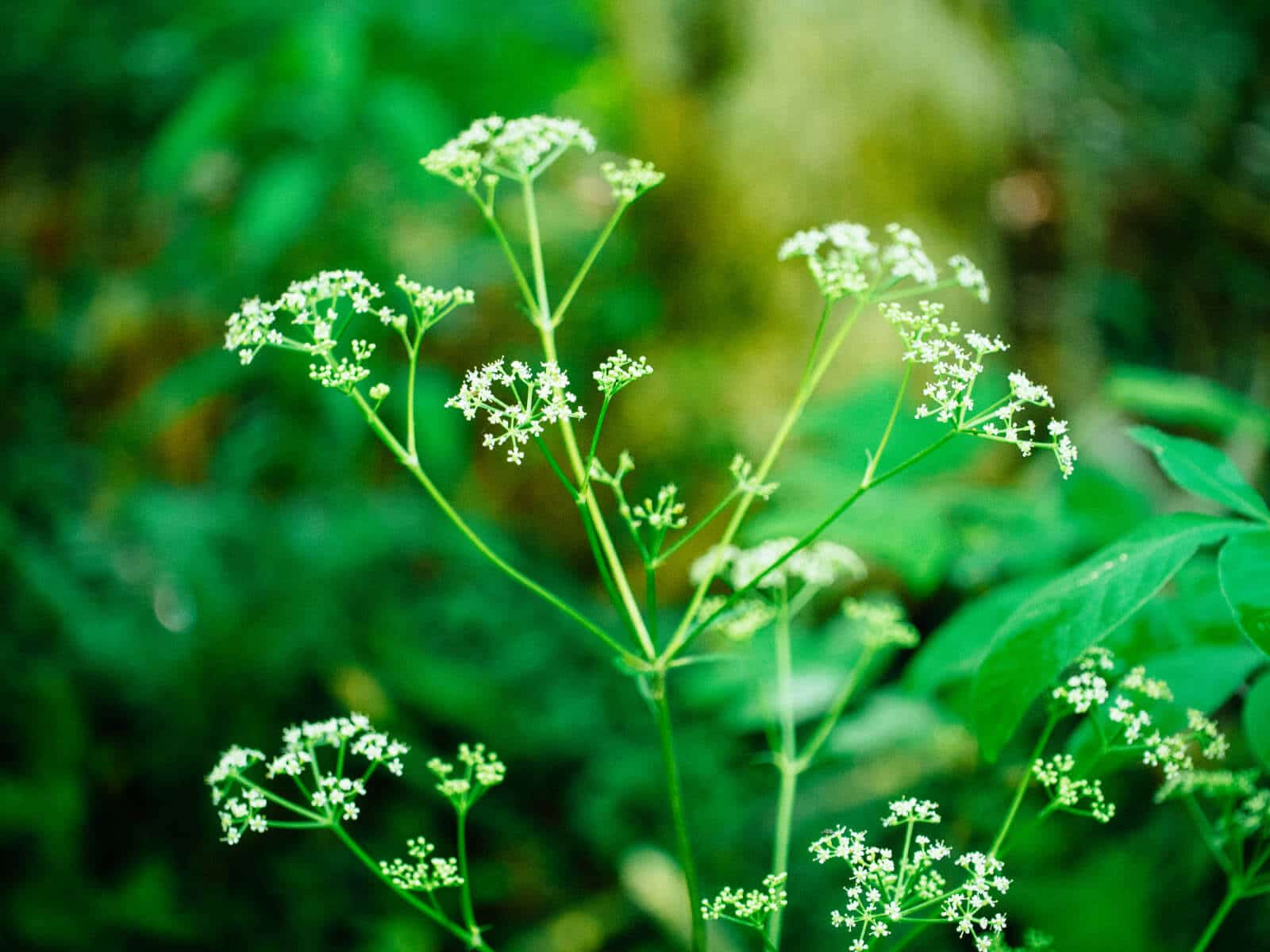
Since the olden days, Queen Anne’s lace has been used medicinally for everything ranging from urinary tract problems to experimental treatments for cancer.
Even today, some herbalists consider the seeds to be a potential natural contraceptive (though you would have to eat a certain amount of seeds every day for a specific period to see this effect).
Queen Anne’s lace also looks a lot like wild parsnip (Pastinaca sativa), another noxious weed. The leaves of wild parsnip contain chemical compounds in the sap called furocoumarins, which cause certain people’s skin to react in sunlight.
Some reactions are more severe than others, ranging from a mild itch in the sun to heavy blistering of the skin. (The root of wild parsnip, on the other hand, is safe and edible.)
Despite all of them belonging to the same family (Apiaceae, known as the parsley family), a distant relation to poison hemlock does not make carrot tops, Queen Anne’s lace, or wild parsnip poisonous.
The lesson here? Don’t go picking wild plants that look like carrots.
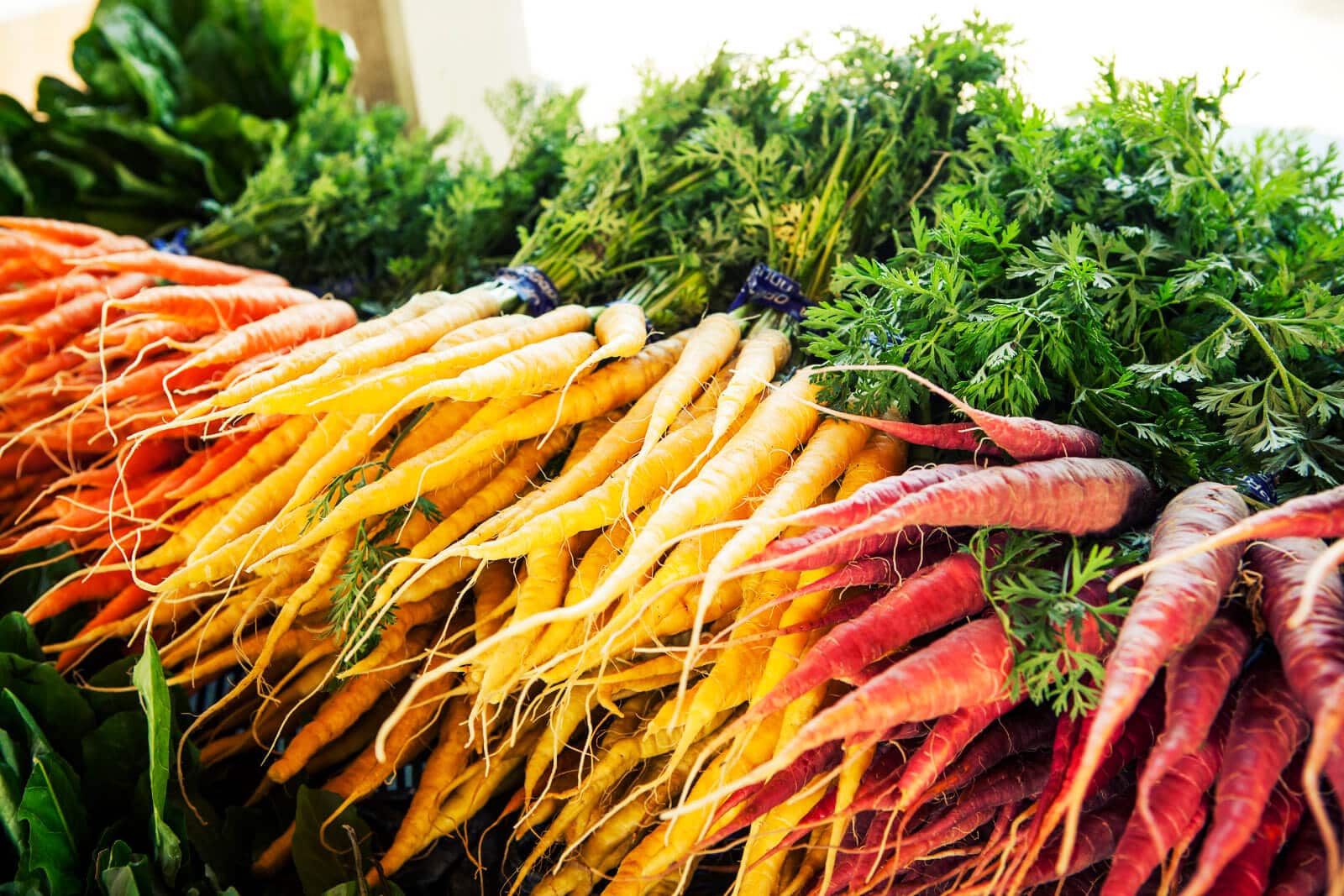
Myth #3: Supermarkets don’t sell carrot tops, so they must be poisonous.
Many supermarkets do sell carrots with the leaves attached (though they usually don’t look attractive enough to eat) and most farmers’ markets sell them as well.
The reason we don’t find carrot tops more often is because even after they leave the ground, the leaves continue to draw moisture and energy from the root, so they’re removed to preserve the carrot.
(Side note: If you grow your own carrots at home, always cut the leaves off after harvest and store them the same way you’d store salad greens.)
Judging by the looks of supermarket carrot tops, this might be a packaging and transportation issue as well, since they tend to be a bit raggedy by the time they reach produce shelves.
In short: Don’t let a lack of commercial availability steer you away from eating carrot leaves.
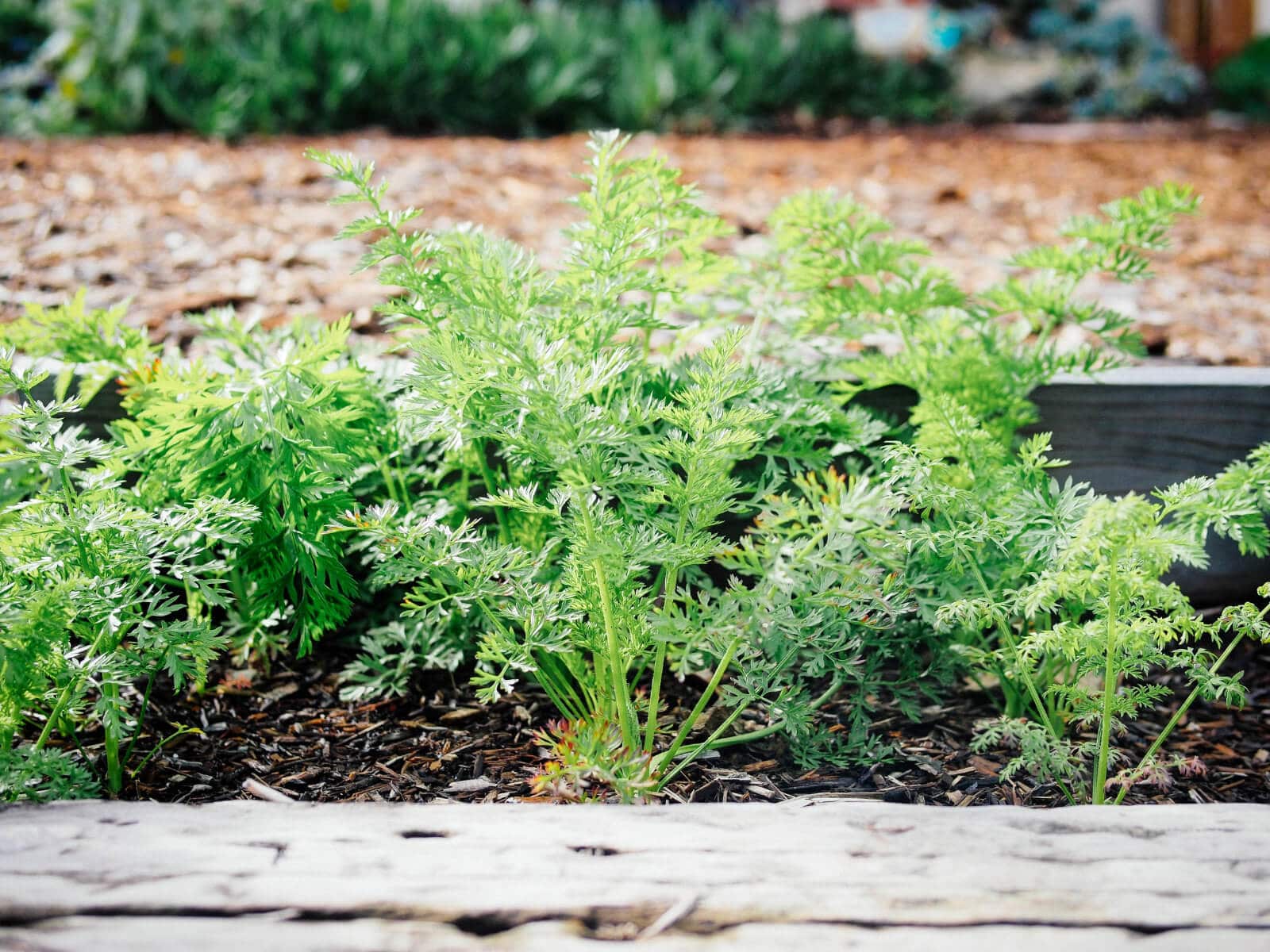
Myth #4: There have been accounts of people getting sick from eating carrot greens.
This is entirely possible and probably even true. It’s also possible and probably true that these people have either an allergy or an intolerance to carrot greens.
There’s an important distinction between food allergy versus food intolerance.
Food allergy causes an immune system response to a particular food protein. The immune system overreacts and interprets the food as harmful, resulting in itching, swelling, trouble breathing, and even death in extreme cases.
Food intolerance occurs when the body lacks an enzyme to process a particular food, causing unpleasant symptoms like nausea, abdominal cramping, or acid reflux. These are not immune system responses and are not life-threatening.
Another reaction with similar symptoms is food poisoning, which is caused by bacteria or toxins. This may be possible with commercial carrots that have been heavily sprayed with pesticides (since the leaves are most affected), but likely not a problem with organic or homegrown carrots.
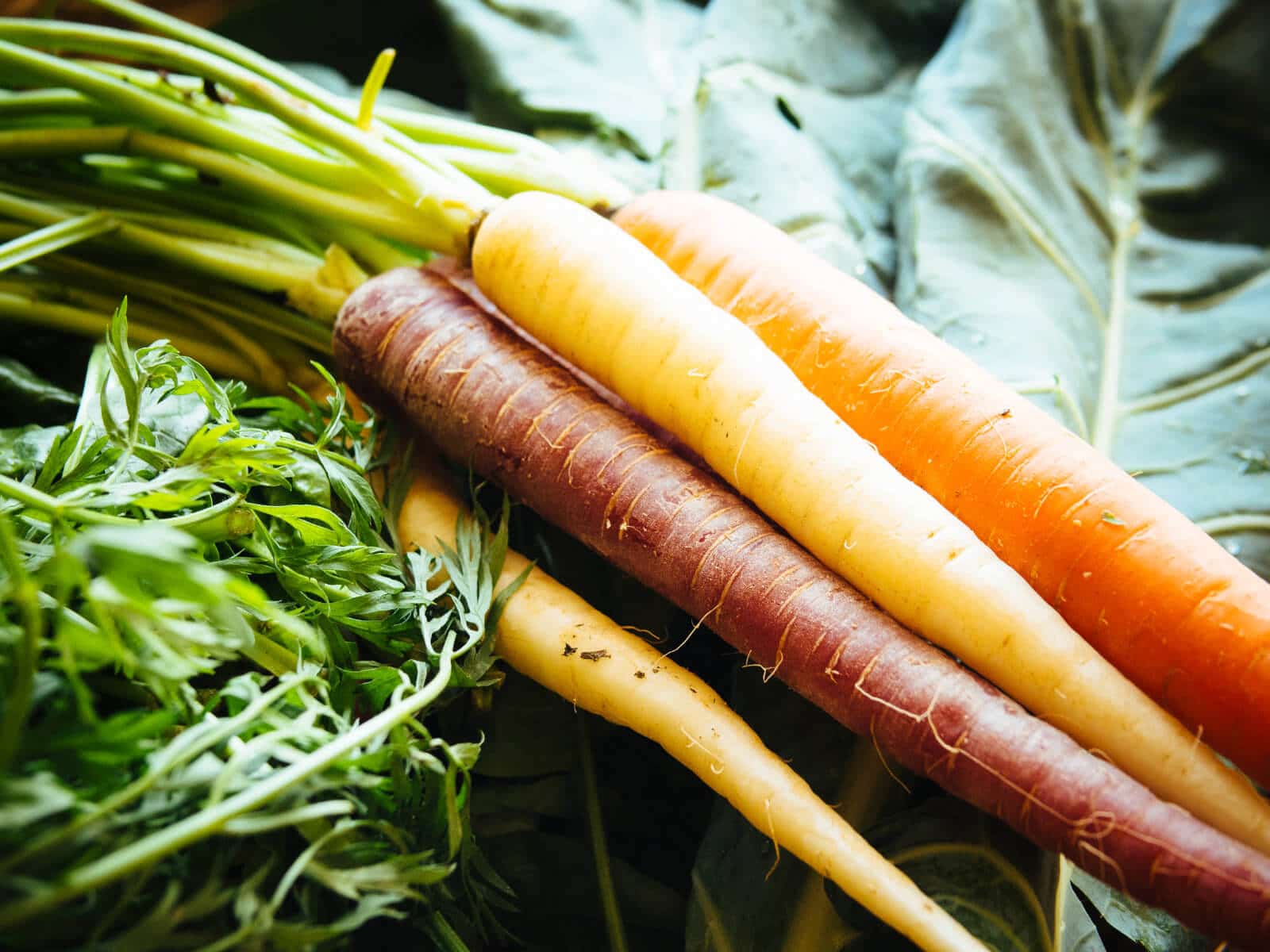
A true food allergy to carrots is uncommon, but an interesting reaction called oral allergy syndrome (OAS) can occur in people who are allergic to birch pollen and mugwort pollen.
The major allergen in carrots, a protein called Dau c 1, is so similar in structure to the molecules in birch pollen and mugwort pollen that the body can’t tell the difference.
That means if you have an allergy to either, eating carrots or carrot greens can trigger a reaction in the form of itching or swelling of the mouth or throat.
According to WebMD, the symptoms of OAS become less severe when you cook the trigger food because heat alters the offending protein.
All this basically means a person could have an unexpected cross-reactive allergy, food allergy, or food intolerance to carrot greens (as one might have with dairy or wheat)—but that does not make them poisonous.

Myth #5: But there has to be a good reason why we (as in we in the US) don’t eat carrot tops!
Why carrot tops are generally not eaten in our culture is a mystery to me (though they’re considered a market vegetable in many parts of Europe).
I’ve posed this same question when it comes to broccoli greens, which are very edible and delicious (but never seen in the store).
Same goes for fava bean leaves, kale buds, radish seed pods, and the broad outer leaves of cabbage; I consider them a wonderful bonus of growing your own food.
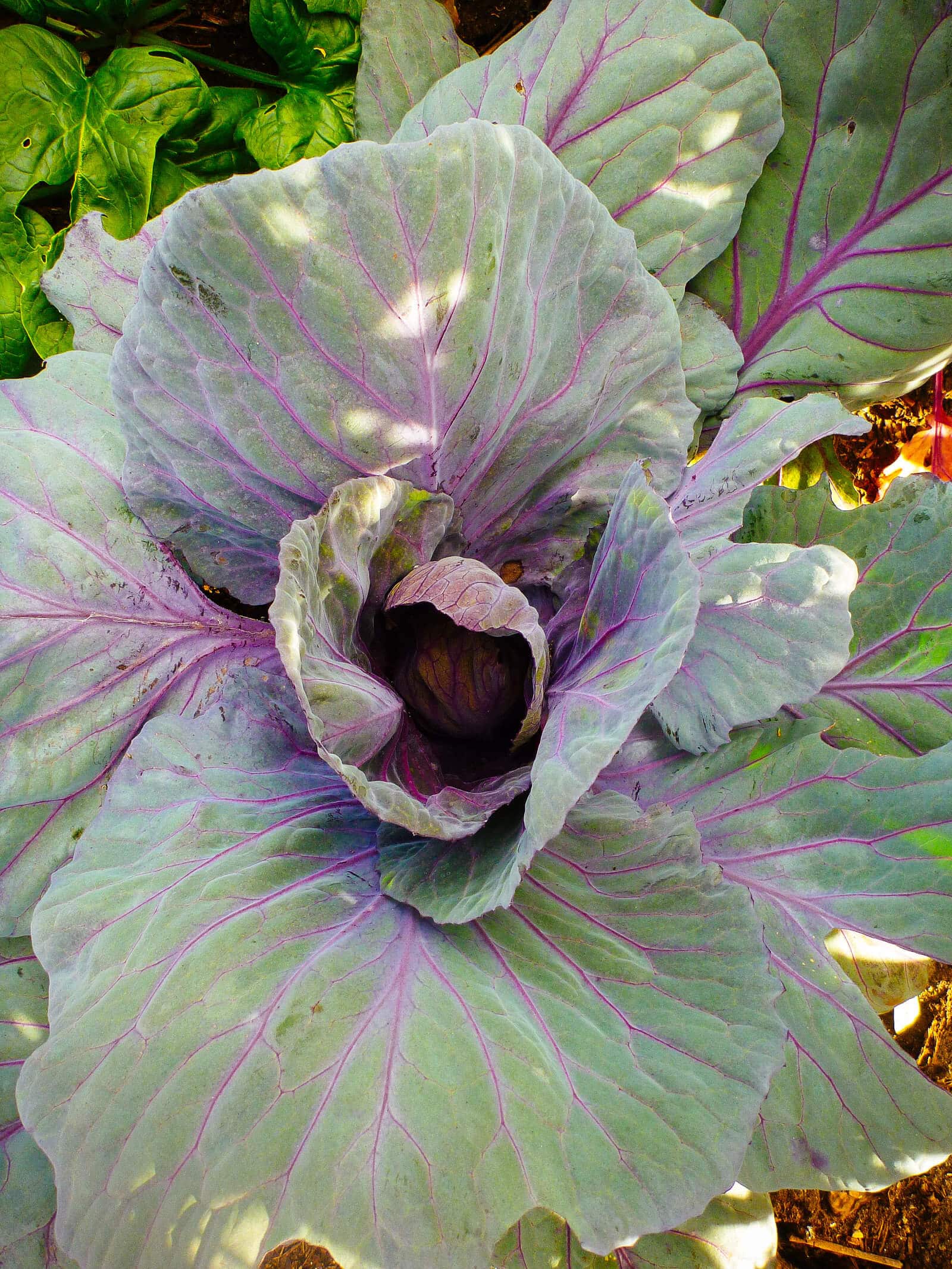
Just because these plants are not culturally popular in the kitchen does not mean they’re not nutritious or can’t be eaten.
In fact, the leaves of root vegetables tend to be loaded with more phytonutrients than the roots themselves, and I always encourage people to reduce their waste and learn how to cook the unusual (but edible) odds and ends of their produce.
I’d guess it has to do with taste, as the flavor and texture of carrot tops can take some getting used to… if all you’re used to are the tasteless, tender iceberg lettuces from the store.
(Even though icebergs are laughably low in flavor and low in nutritional value, they’re the most popular lettuce in the US—which says something about our society!)
I consider carrot tops to be more of an accent and use them that way to add depth to a recipe. Carrot tops taste like a very concentrated carrot: somewhat bitter, earthy, and herbaceous.
You can eat carrot tops raw in salads, wilt them into soups, braise them with a flavorful roast, saute the greens in a little oil and garlic with other vegetables, or stuff a few sprigs of carrot tops into sandwiches.
I especially like carrot tops in a rich, meaty stew or sprinkled over lighter dishes as a garnish, the way you’d use parsley. (Carrot tops do make a decent substitute for parsley in a pinch.)
To get past the texture, the leaves should be de-stemmed and chopped up finely. Beyond that, you can eat carrot tops however you’d like—and rest assured you’ll still be standing the next day!
Common questions about carrot leaves
What do carrot leaves taste like?
Carrot leaves (also known as carrot greens or carrot tops) have an earthy “root vegetable” type of flavor, not unlike carrots themselves. Depending on the variety (and other factors such as time of year harvested), carrot leaves might have a slight bitter or herbal flavor.
Personally, I think carrot leaves taste like a cross of carrots and parsley, and they’re especially delicious when paired with strong, savory or tangy sauces.
How do you store carrot leaves?
Like all other root vegetables, the leaves should be removed from the roots as soon as you bring your carrots home. That’s because after harvest, the roots continue to draw energy from the leaves, rendering them limp and lifeless. (This is mostly an aesthetic issue, however—limp greens are still perfectly okay to eat, especially if you plan to cook them anyway.)
To keep your greens nice and crisp, make sure you cut off the leaves (leaving an inch or so on the carrot) and store them in a plastic bag, tightly sealed, or wrapped in a damp kitchen towel in the fridge. The carrots themselves should be stored separately in the crisper drawer. Here’s my guide on best practices for vegetable storage at home.
How do you prepare carrot tops for cooking?
Strip the tender leaves from the carrot stem and use them the same way you’d use parsley in a recipe: as an accent or garnish, coarsely chopped or finely minced (depending on preference). Discard or compost any tough stems, or use them as flavoring when making vegetable stock.
View the Web Story on edible carrot tops.
This post updated from an article that originally appeared on July 11, 2013.


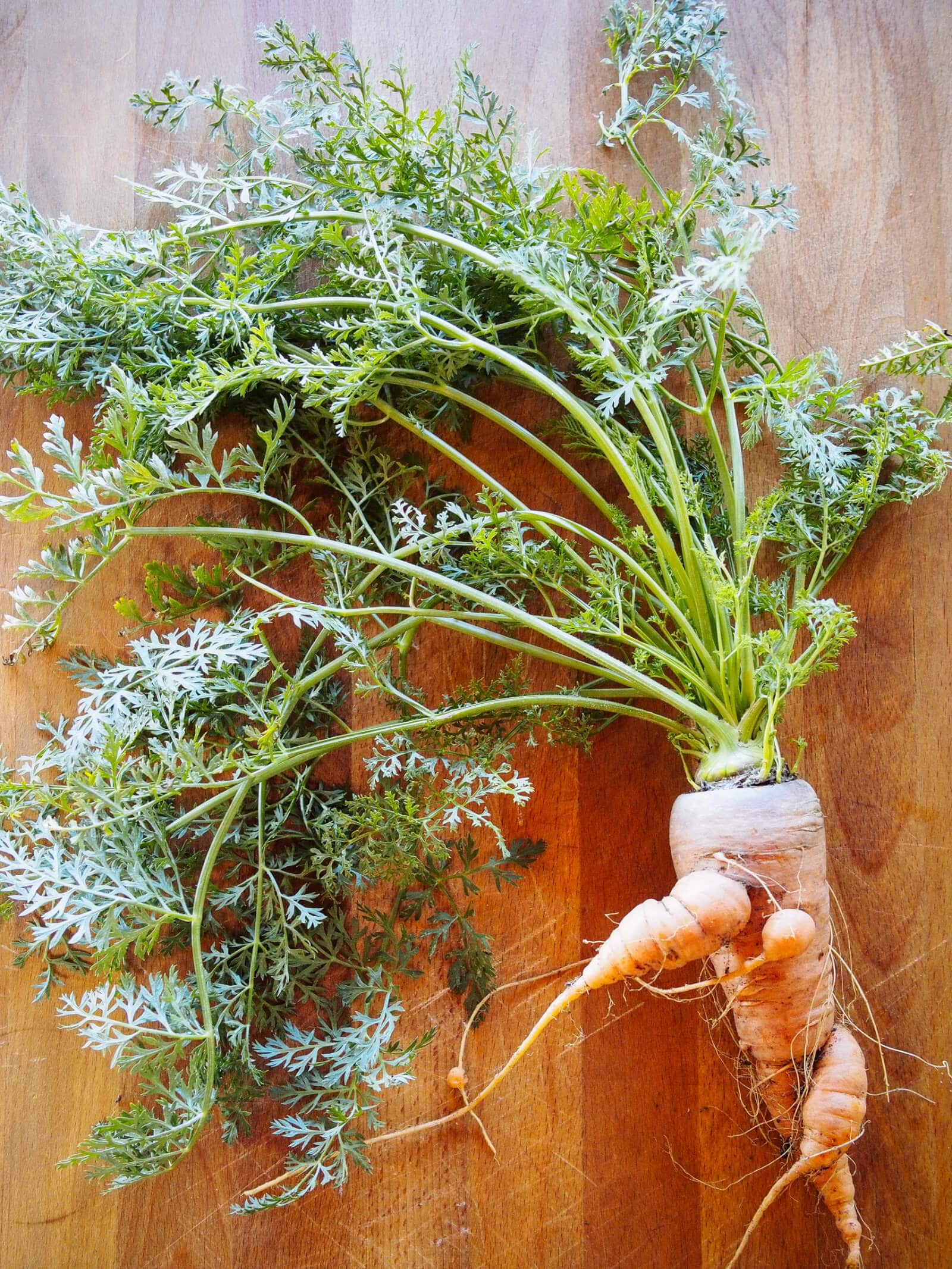













This idea of carrot tops being poisonous did not start with the New York Times item in 2009. I am in my 60s, and my mother always warned me not to eat carrot tops because they were poisonous. No one that I knew, no families, no friends, no relatives, ever tried eating them because everyone “knew“ they were poisonous. This goes back a long way. I’m not sure I can bring myself to try them at this point.
great article! I eat all of my Carrot Tops. they make a great substitute for parsley, I even like them better than parsley, they have more flavor.
They definitely do have more flavor!
This post was great! I think its cool to know carrots were cultivated from queen anns lace. I did some looking and just in case anyone wants to tell the difference between it and poison hemlock, the hemlock has smooth stems and queen Anne’s lace has little hairs on its. So just remember, Queen anne has hairy legs☺️
Linda I read many years ago that carrot tops – leaves – greens – have much more ascorbic acid (vitamin C) that parsley, but now I can’t find any reliable information about that. Can You help me to find out the truth about carrot tops? 🙂 best regards
Hi Everyone, I am a huge fan of my dehydrator and a lot of my carrot greens end of getting dried and pulsed along with other dried garden goodies (beet tops, chard when I have too much, extra kale or tatsoi that is taking up space I want for something else, etc.) into my very own dried greens for smoothies. Its a fantastic way to add some garden veggies into a midwinter breakfast and sure beats paying forty dollars for a “greens+” type supplement.
I love this idea, Paul! I was just wondering how to save the carrot tops for longer to use during our Ohio winter. Wonder if they can also be frozen (like spinach). I have a dehydrator and rarely use it. Guess I’m not very creative in my thinking. Grew carrots and radishes for the first time this year.
Great post! I’ve been saving and eating my carrot greens for years. It used to irk me that all that leafy goodness was going on the compost pile until I figured out they were fine to eat. Same with celery greens.
Exactly! There’s so much we can eat from these plants!
Thank you for the extremely helpful article that solves the lifelong myth. I too never considered carrot tops to be toxic, but my friends kept insisting that they are, until I showed them this. Now they don’t nag me anymore!
Nice, Nancy! Glad I could back you up! 🙂
I’ve been eating farmers market unsprayed carrot greens for 10 years now.
My vision returned to near normal, at 65 years young, so even the eye doctor was in disbelief.
On top of that, I feel like I am 20, and run 3 miles every other day.
Carrot greens are totally 100% great for you!
Don’t let the idiots in government and the doctors tell you different. Their agenda is to keep you sick, on their prescriptions, and a victim. They lie lie lie!
Didn’t help much with the paranoia, though, eh?
It may be YOUR opinion that the extremely knowledgeable & commonsensical person you’re replying to is somehow self-evidently “paranoid” [according to you], but I’m at least one person here who very much wishes to go on record saying that I’m in no way buying what you’re selling. SMH.
I love your sense of humor! Thank you for allowing me a hearty bout of laughter this morning with my cup of coffee. I’m also happy the man’s eyesight is better. And remember there are plenty of different types of fruit to enjoy loaded with serotonin which help dissipate pent up anger and anxiety.
Thanks Derf, you gave me a morning chuckle
When growing your own carrots, one step is to thin the carrots out so that the ones left have enough room to grow without being crowded. The best way to handle these tiny baby carrots, much, much smaller than any sold in the markets, is to put into a bag instead of leaving them in the garden to decompose and feed the soil. Rinse them and put them in a hot pan with some melted butter and a touch of honey if you really like them sweet. A quick saute, stir fry or steam and you have a delicious dish.
For those tiny carrots that have just been thinned, I like to put them in a salad, left whole with the greens still attached. Good stuff!
Thanks a lot for this well researched and comprehensive post. My mother always warned me that carrot tops were poisonous but I have always had an inkling that I should check out whether it was really true, given the number of other Apiaceae leaves that I eat (hogweed, sweet cicely, ground elder, not to mention all the spices). Now I know!
Please don’t propagate the myth that organic foods are not sprayed. They are almost always sprayed with pesticides derived from natural sources. Those natural products may be as toxic as any synthetic pesticide and they certainly have there own dangers and concerns. All produce that is eaten raw should be washed well and treated with the same care that one would use when approaching conventionally grown vegetables. I am not questioning the value of organics. I am only trying to make people aware that organic produce is sprayed with pesticides. If you want pesticide free food, look for no spray.
I am not propagating any myth that organic foods are not sprayed. However, conventionally grown vegetables are often treated with systemic pesticides — toxic chemicals that are absorbed into the plant’s tissues and cannot be washed off. In organic food production, these types of pesticides are not allowed.
There is a YUUUUGE difference between natural pesticides which are often essential oils and synthetic man made pesticides. It’s like comparing Apples to sheep shit. Even garlic is an effective pesticide / repellent.
I had so much fun with this and I am going to put my carrot tops in a stew to punch up that great earthy carrot flavor. It will remind me of roast! This article is exactly what I was looking for and helped a great deal.
I first clicked on this post that seemed to fit my query, but could not get past the first paragraph without shaking my head. Referring to caffeine as a ‘poison’ is a bit of a tip off. Not that caffeine is super good, but I am so much happier with this article. It explains exactly what I needed and I am confident I could further research it if I felt the need, with the information provided.
Thank you for the great comment, and I’m glad you found this post informative! Enjoy your carrot tops!
I love this! I tried the carrot tops and they were good! Can I reblog your post?
Hi Karen! I’m so happy you enjoyed them! You can link to my post with your own summary, but please do not republish the content.
Thanks, Linda! Here’s my post http://croydonfoodswap.wordpress.com/2014/05/31/carrot-tops/
I hope the info on your article will help people not to ‘fear’ carrot tops!
I juice 1 bunch carrots w/ the tops, 1 bunch beets w/ the tops, 1 stalk celery, 4 red apples, 1 green apple, 1 pint strawberries w/ the green tops, 1 pint blueberries, 1 lemon with the rind and a piece of ginger root, keep it in a sealed container in the fridge and drink a glass 1-2 times daily along with a regular diet. I’m 46 year’s old but look 15 years younger and cleared away alot of smaller health issues, it keeps my weight down and my skin is soft, smooth & flawless. I’ve been juicing this way for about 5 years and I’m still alive even with all those carrots tops ingested 🙂
Thanks for your article on this GardenBetty!
Here’s to many, many more years of good health! 🙂
I make carrot top pesto from the carrots in my garden and it is the best! Zingy and flavorful. Thanks for your post!
Michael Benoit liked this on Facebook.
Jasmine Ward liked this on Facebook.
Tried the carrot top salsa. Tastes pretty good. No allergic reaction. Thanks for expounding on the subject of whether or not carrot tops are toxic. I find the information u provided very interesting.
I’m so glad you enjoyed the carrot top salsa and the original chimichurri recipe!
Awesome – I love the science and facts in this post. I started eating my broccoli greens after you pointed that out they were edible in a previous post (and they’re so giant!) Is there any way to preserve the brassica leaves in a tasty way (maybe pickling?), I have a hard time getting through all of them and my freezer is full!
Try fermenting your broccoli greens! You can use this recipe http://gardenbetty.com/2013/06/ruby-kraut-and-why-its-so-good-for-you/ or this one http://gardenbetty.com/2013/06/vietnamese-pickled-mustard-greens-cai-chua/… essentially the same pickling recipe, just different spices. Or make your ferment even spicier by making a broccoli green kimchi: http://gardenbetty.com/2013/07/red-cabbage-kimchi/. I love to ferment greens because it helps me go through a huge harvest in one easy swoop!
I chop up the leaves from my cauliflower, broccoli, brussel sprouts and collards and then just freeze them. use them anytime sauteed with onions and garlic
I really like your last point. I have a friend from Kenya who said they eat the squash and zucchini leaves. There’s no market here for them but that doesn’t make them in edible.
The squash is an amazing plant since every single part of it (leaves, tendrils, stems, blossoms, fruits and seeds) is edible and delicious.
Thanks. I always put greens in my pasta sauce. And carrots. Today I had a small amount of fennel and a small amount of kale, but not enough. Then I pulled the carrots out of the fridge and they had fresh, green tops on them and I had the rest of my greens. I’ve used them before, but I came here to show a guest they weren’t going to kill her.
But I didn’t know about the squash leaves. I need to learn more because we’ve got about a hundred squash plants sprouting in the compost pile right now.
Are they best raw or cooked? Are there special prep requirements? Etc.
Thanks,
Brian
I use only the young, tender squash leaves and squash stems, and cook them as I would any other green. They’re great in curries, sautes, and soups.
If you have hundreds of volunteer squash seedlings, you can eat them raw like a microgreen.
Thank you, I’ll give it a try.
A shame that the greens are delicious but so underused. Are Carrot Tops Toxic? (The Short Answer: No) http://t.co/cUoFQmnZ6z #gardenchat
If you’re growing your own carrots, it’s a bonus edible! Are Carrot Tops Toxic? (The Short Answer: No) http://t.co/ehLQULvTqK #gardenchat
Debunking the most common myths: Are Carrot Tops Toxic? (The Short Answer: No) http://t.co/xgU3wLZ2YP #foodie #gardenchat #gardening
Yes, you can eat them! Are Carrot Tops Toxic? (The Short Answer: No) http://t.co/SZ3CQhXG4h #foodie #gardenchat
Madeleine Grant liked this on Facebook.
Scott C. Poole liked this on Facebook.
Amy Watkins Pellicer liked this on Facebook.
Tracy Graves liked this on Facebook.
Carrot tops make a great pesto.
Bonnie Max Fuentevilla liked this on Facebook.
Thanks ! Once again, an informative and interesting read.
Thu TranLe liked this on Facebook.
Deborah Fedorchak Liberatore liked this on Facebook.
Are Carrot Tops Toxic? (The Short Answer: No):
Ever since my carrot top salsa recipe, I’ve received a great n… http://t.co/X4MqmruzAO
Blogged on Garden Betty: Are Carrot Tops Toxic? (The Short Answer: No) http://t.co/zMkigCpOm1